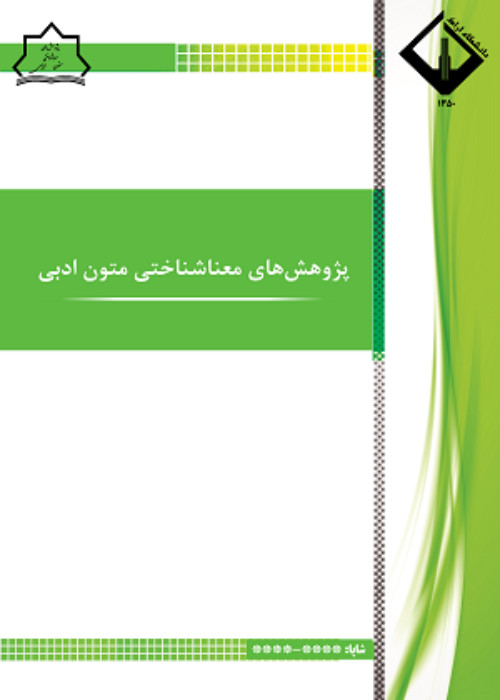Semantics of Metaphor in the Qur'an (21st to 25th parts)
Author(s):
Article Type:
Research/Original Article (بدون رتبه معتبر)
Abstract:
Semantics is a science that examines the relationship between words and meaning. This science is used to discover the meanings in words and sentences in different ways; Therefore, it is necessary for new linguists to use the science of semantics to discover the secrets of the divine verses, which need interpretation and explanation. God Almighty has expressed many hidden meanings by using metaphors. Metaphor is one of the tools that urgently needs semantics. The use of these metaphors is not only aesthetic, but they are adopted to express something. The present study aims to integrate "semantics" and "metaphor" in the verses of parts 21-25 of the Holy Quran, so that we can understand the meanings hidden in the metaphors and images in them.From the results, it can be seen that all types of metaphors are used in these components, such as subjunctive, main, subjunctive, and allegorical metaphors. Allegorical metaphors are the most used in these parts, and each of the metaphors used has its own meaning, which are: exaggeration and emphasis, embodying and creating an image, clarifying the meaning. Almighty God has generally used metaphors in these parts to explain the problems of the hereafter and the state of disbelievers.Semantics is a science that examines the relationship between words and meaning. This science is used to discover the meanings in words and sentences in different ways; Therefore, it is necessary for new linguists to use the science of semantics to discover the secrets of the divine verses, which need interpretation and explanation. God Almighty has expressed many hidden meanings by using metaphors. Metaphor is one of the tools that urgently needs semantics. The use of these metaphors is not only aesthetic, but they are adopted to express something. The present study aims to integrate "semantics" and "metaphor" in the verses of parts 21-25 of the Holy Quran, so that we can understand the meanings hidden in the metaphors and images in them.From the results, it can be seen that all types of metaphors are used in these components, such as subjunctive, main, subjunctive, and allegorical metaphors. Allegorical metaphors are the most used in these parts, and each of the metaphors used has its own meaning, which are: exaggeration and emphasis, embodying and creating an image, clarifying the meaning. Almighty God has generally used metaphors in these parts to explain the problems of the hereafter and the state of disbelievers.
Keywords:
Language:
Persian
Published:
Journal of Semantic Research of Literary Texts, Volume:1 Issue: 2, 2023
Pages:
71 to 85
magiran.com/p2555732
دانلود و مطالعه متن این مقاله با یکی از روشهای زیر امکان پذیر است:
اشتراک شخصی
با عضویت و پرداخت آنلاین حق اشتراک یکساله به مبلغ 1,390,000ريال میتوانید 70 عنوان مطلب دانلود کنید!
اشتراک سازمانی
به کتابخانه دانشگاه یا محل کار خود پیشنهاد کنید تا اشتراک سازمانی این پایگاه را برای دسترسی نامحدود همه کاربران به متن مطالب تهیه نمایند!
توجه!
- حق عضویت دریافتی صرف حمایت از نشریات عضو و نگهداری، تکمیل و توسعه مگیران میشود.
- پرداخت حق اشتراک و دانلود مقالات اجازه بازنشر آن در سایر رسانههای چاپی و دیجیتال را به کاربر نمیدهد.
In order to view content subscription is required
Personal subscription
Subscribe magiran.com for 70 € euros via PayPal and download 70 articles during a year.
Organization subscription
Please contact us to subscribe your university or library for unlimited access!


